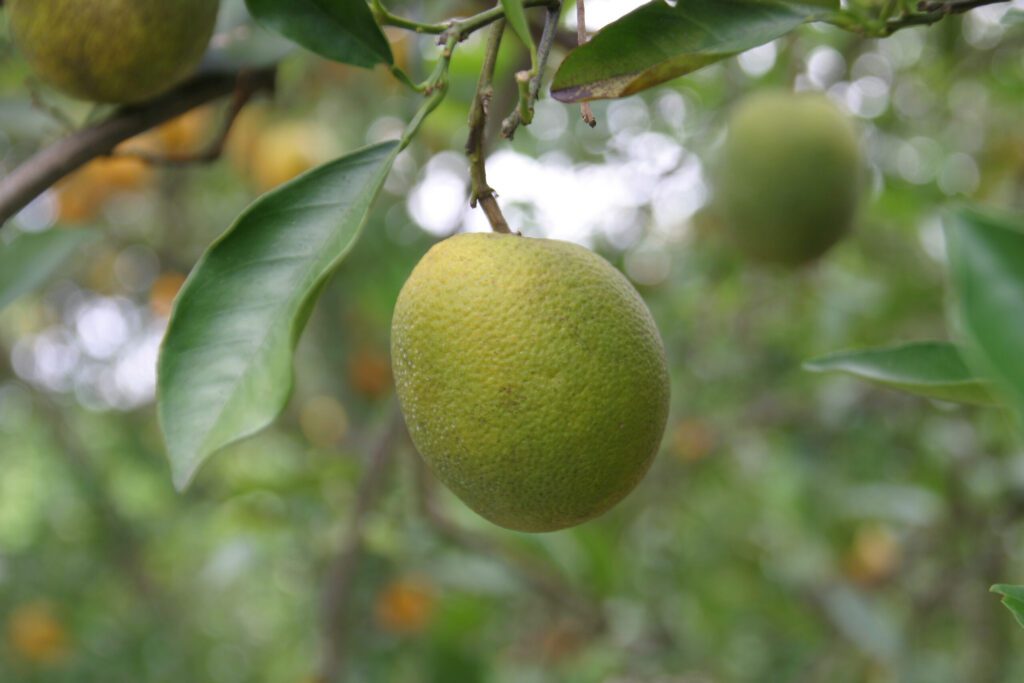UF Researchers Discover a Potential Way to Control Greening
by HEATHER MACHOVINA
UF researchers have uncovered another potential tool in the fight against citrus greening. Known as FANA molecules, these small, single-stranded nucleic acids can be used to silence the HLB bacterial pathogen and shut down essential processes in the psyllid vector.
Headed by Dr. Kirsten Pelz-Stelinski, an associate professor in the Department of Entomology and Nematology who studies insect vectors and insect microbe interactions, this research project was funded by USDA National Institute of Food and Agriculture a few years ago. The intent was to evaluate this new technology that is on the market and is used for human health, targeting bacteria, and other cellular targets in humans for human medicine.
The purpose of this research was to evaluate these new FANA molecules for use in citrus to combat citrus greening disease. “The neat thing about these,” says Pelz-Stelinski, “they’re a synthetic technology that allows us to silence RNA.” If you’ve heard of RNAi technologies, which are popular in the media now as a new way of targeting insects as an alternative to pesticides, this is very similar. Except FANA molecules are able to be used very specifically to target bacteria based on their RNA sequences. “We can basically shut off a gene in a bacteria so that we can then eliminate that bacteria,” details Pelz-Stelinski.
The pathogen that’s associated with citrus greening disease is a bacterial pathogen so it can be targeted in both the insect vector, the Asian citrus psyllid, as well as the citrus host plants with FANA molecules.
Furthermore, the psyllid is an interesting vector because it has a couple of different endosymbiotic bacteria. These are bacteria that cannot live outside of the insect, but only in that insect. The insect relies on them to provide benefits like nutrition because its diet is nutritionally very poor. “If we target the bacteria in the psyllid it has a negative effect on the psyllid,” notes Pelz-Stelinski. Depending on the titer given to the psyllids, survival decreases. Other things can be shown to decrease as well like reproductive capacity.
Most of the work at this point has been conducted in greenhouses. To avoid using too much of the molecule, researchers inject the trees or let the tree take it up via the roots. They can also cut a piece of the plant off and let the piece absorb the FANA molecules through its vascular system.
The trials show that if the molecule is sprayed on leaves, the psyllid will pick it up during feeding. Although, this would be an unlikely application strategy in a grove because it’s a very specific chemical, using RNA technology, so it would be sensitive to degradation and very expensive.
The researchers were really interested in targeting the bacteria inside the psyllid itself, the symbiotic bacteria. “We really wanted to show that we could reduce psyllid populations and affect those bacteria,” mentions Pelz-Stelinski. Their work proves researchers can successfully get the FANA molecules into the psyllids when they feed. Whether they immerse leaves in the material or allow citrus trees to take it up through the roots. When the psyllids feed, they will pick up the molecules and it starts working internally to reduce the populations of those essential bacteria inside the psyllid.
“These FANA molecules are a new, flexible technology because we can design them to either target a specific bacterium in the psyllid or the pathogen, or we could do both at the same time.” It’s very flexible and it’s very specific. They are not targeting non-target organisms; they are only able to silence the genes in the things they are specifically designing them for.
This research shows that FANA molecules can actually get in and penetrate insect cells, can reduce the abundance of Candidatus Liberibacter asiaticus (CLas) the citrus greening pathogen in the psyllids and in citrus trees, and are able to target some of the essential bacteria inside the psyllid. This is tremendously useful for citrus where there are some limited capabilities in terms of managing both the pathogen and the insect.
This is a great contribution to the fight against citrus greening because multiple things can be targeted at the same time. “You can really achieve some redundancy in the system offering some assistant with things like preventing resistance,” according to Pelz-Stelinski. Resistance to insecticides is a huge problem for managing psyllids, so being able to target multiple areas together really gives some flexibility and is very easily adaptable if you’re looking to use it for any target. This would be useful for other agricultural systems and pathogen systems in future research, too.

